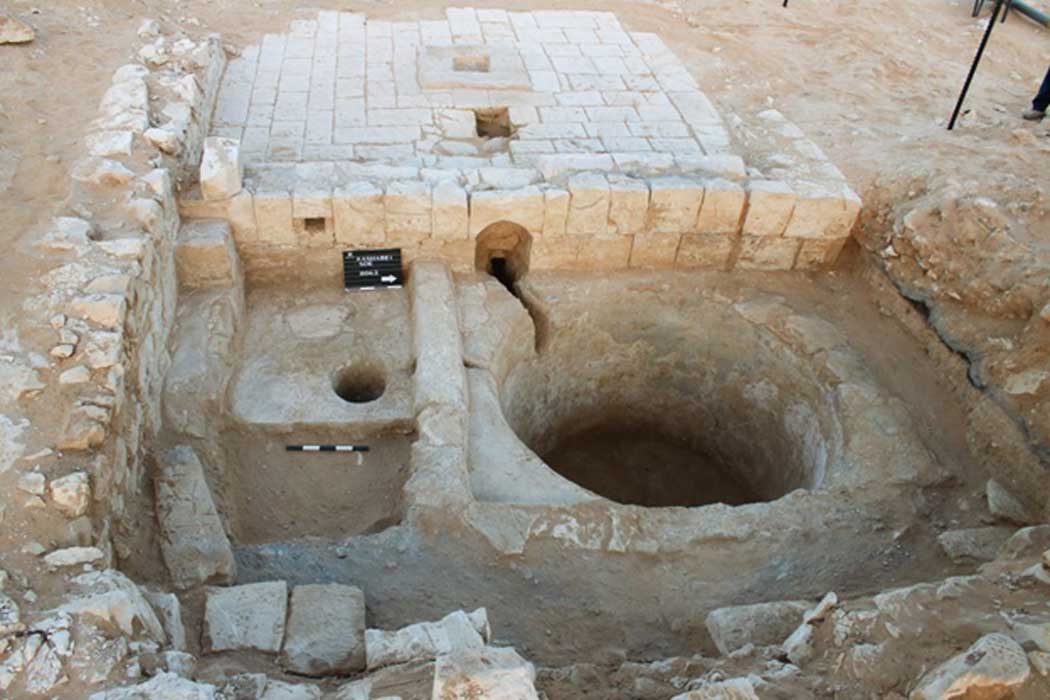Boutique Wine for Byzantines: 1,600-year-old Wine Press Discovered in the Negev Desert
The Times of Israel reports that a 1,600-year-old wine press has been discovered in a vast Byzantine building along the incense trade route in the southern Negev desert in Israel. Experts suggest that the Byzantine-era wine press is truly unique.
Unique Wine Press Found in Israel
In the millennium that the Byzantine Empire lasted, a great civilization was developed, that maintained among many other things, the great tradition of grape vine growing and winemaking of the ancient Greek civilization. Throughout this period the winemaking practices have evolved and the Greek wine has continued to hold an important commercial and social role. The Byzantines appreciated particularly Negev wines, which were seen as boutique wines and were highly esteemed. Now, a glimpse into their making is possible as The Times of Israel reported.
- Ruins of Ancient Winery and Roman Bathhouse Unearthed in Jerusalem
- 1,300-Year-Old Antidepressant Pills Discovered in Ancient Center for Drug Production in Turkey
- Little Known Links Between Spirits You Drink and the Holy Spirit

Digging in the ancient 1,600-year-old wine press in Ramat Negev, summer 2017. (Tali Gini, Israel Antiquities Authority)
During maintenance work near the Ramat Negev Regional Council, a team of Israel Antiquities Authority archaeologists uncovered a vast Byzantine-era building dating to the fourth century AD, inside of which were found the remains of a wine press. What makes the new find really rare is that only one other press of this type has been found before in the Negev region. Director of the development project in the area, Dr. Tali Gini told The Times of Israel, “The southern Negev is known as an agricultural region which grew grapes for wine that was exported to the far reaches of the Byzantine Empire.”
The pit into which the runoff juice was collected is about two meters deep with a diameter of 2.5 meters, meaning it could hold around 6,500 liters of wine. The sheer scale of the production suggests that the press was most likely connected to a local Byzantine army unit and possibly supplied their wine ration or the winery was producing a lot of wine for export.

The juice pit had capacity for 6500 liters of juice (YouTube Screenshot)
The Accidental Discovery of a 1,400-Year-Old Winepress in Israel
This is not the first time that a newly discovered find in Israel is closely linked with wine production. Wine is believed first to have been vinted in Mesopotamia about 6,000 years ago. The Bible, or Tanakh to Jewish people, is full of references to wine. And there are ancient winepresses all over the Middle East. In 2015 – as previously reported in an Ancient Origins article – some young boys in Israel carefully excavated a winepress that was about 1,400 years old, not realizing they were doing anything wrong.
The Israel Antiquities Authority got wind of the dig and took over, bringing to light an important finding in the history of wine production in the region. The unauthorized dig of the winepress came to light when a woman jogging saw what looked like an archaeological excavation, but with none of the usual signs warning the curious to stay away. She reported it to the antiquities authority, which sent some inspectors to look and watch. They saw that whoever was doing the unauthorized and entirely unknown (to the IAA) dig was doing it carefully. The excavations were clearly done by someone other than robbers. The winepress was large, measuring 5 meters by 5 meters and it consisted of a large cistern in which the grapes were pressed, perhaps by walking on them. The grape juice went from the cistern to pipes carved into the stone and then the juice drained into a pit.
- Innocent boys meticulously excavated 1,400-year-old winepress in Israel
- Alcohol for the Ancients: The Oldest Drinks in the World
- Ancient industrial-scale wine press and monastery discovered
Tradition of Desert Winemaking Restarted
Nowadays, the ancient tradition of desert winemaking has been restarted through studies conducted at the Ramat Negev AgroResearch Center. Boutique wineries include the Ramat Negev Winery, and the regional council has inaugurated a “wine route” tour, which includes twenty-three agricultural farms.
Israeli archaeologist Yoram Chaimi, pointed out that the recent discovery of the wine press was totally unexpected and tried to explain why the wine press was abandoned, “In the middle of the sixth century AD, there was a disastrous plague, which led to less need of wine in the southern regions. After the plague, they continued to use the building, but not the wine press. At the end of the Byzantine period, the area was deserted,” he told The Times of Israel. He also added, that the next step now should be a careful excavation and preservation of the site, in order to open to the public one day soon.
Top image: The wine press in Ramat Negev is intermeshed with a building, as seen above, summer 2017. (Davida Dagan, Israel Antiquities Authority)



















